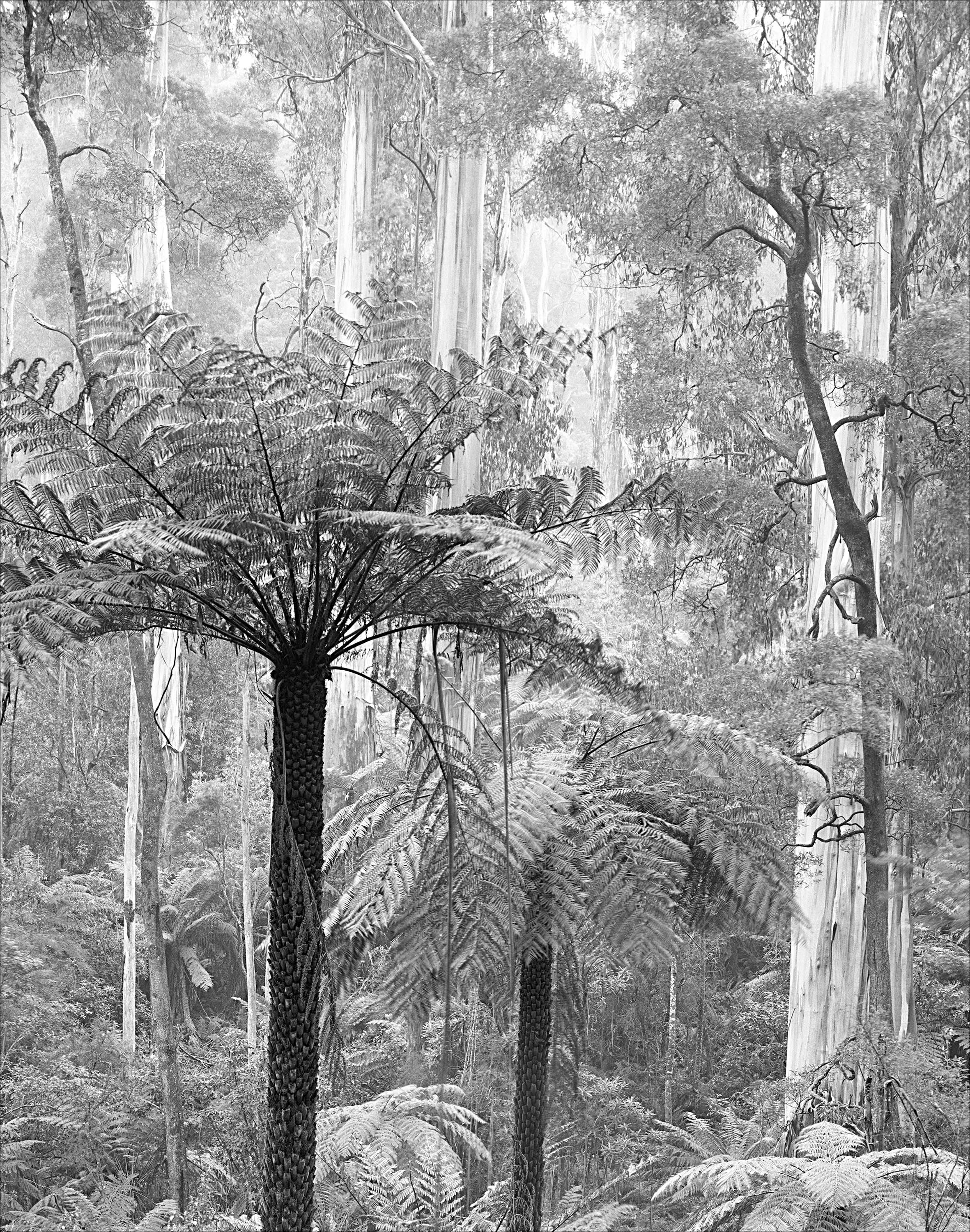
The Photograph Considered number seven – Peter Kinchington
Treeferns in Mountain Ash Forest
My favourite terrestrial habitat in Australia is the Wet Sclerophyll found in Victoria and Tasmania. Here you find the magnificent Mountain Ash (Eucalyptus regnans) -the tallest flowering plant in the world it can grow over 100 metres in height. As an understorey you find a plant that reminds me of the ancient continent of Gondwanaland – the wonderful Treefern.
I wanted an image to show treeferns in the foreground and mountain ash in the background. I needed a more compressed perspective than my 120mm f/6.8 lens offered. I vowed to go back and photograph the scene another day with a longer lens.
Two weeks later I procured a used 300mm f/10 process lens and mounted it in reverse using a step up ring glued to my spare lens board. The symmetrical design of the lens meant that I could use it this way for landscapes and close ups.
I then took the opportunity to go to my chosen location on a still, misty morning. The mist gave depth to the image and being a still day – I was able to use a slow speed of 15 minutes at f/90 using my lens cap as a shutter.
Development: I developed the 4 x 5 negative using stand development in dilute (1: 100} rodinal solution. The negative was scanned and will be used to produce digital internegatives for carbon contact prints.
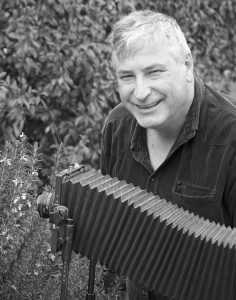
As a career biologist, my photographs have been utilised for scientific publications and as a way to convey the beauty and diversity of the natural world. I am able to apply my skills in underwater, landscape, nature and photography through the microscope to help others convey their own messages. My images have illustrated publications and exhibitions by many organisations including the Great Barrier Reef Marine Park Authority, Museum of Victoria, Victorian Institute of Marine Sciences, the Commonwealth Scientific Industrial and Research Organisation, Ozbreed Turf and Scienceworks. My photographs have appeared in scientific reports as well as popular technical and photographic magazines and in an online indigenous vegetation guide for the Shire of Yarra Ranges. In the Australian Professional Photography Awards I have received both Gold and Silver Awards for my work. Further recognition includes honourable mentions in specialist world wide photomicrography competitions including the Olympus Bioscape Awards and an image of distinction in the Nikon Small World Awards. I am based in the Shire of Yarra Ranges near Melbourne, Victoria, Australia.
From my childhood days I have been fascinated by the natural world. The first sentence that I wrote in primary school talked about the ants I had observed on our back steps and how they were hurrying back to their nesting holes with food they had collected – even illustrating the sentence with a close-up drawing! Photography enables me to share with others my intrigue with nature – celebrating its infinite diversity and intricate detail. During my photographic pursuit to convey the fascinating natural diversity of the world we live in – I have researched and developed advanced imaging techniques. I am sought after by research institutions and organisations for my ability to utilise these techniques to provide aesthetic images that illustrate important features in organisms both large and small.
Peter’s previous The Photograph Considered article can be seen here.
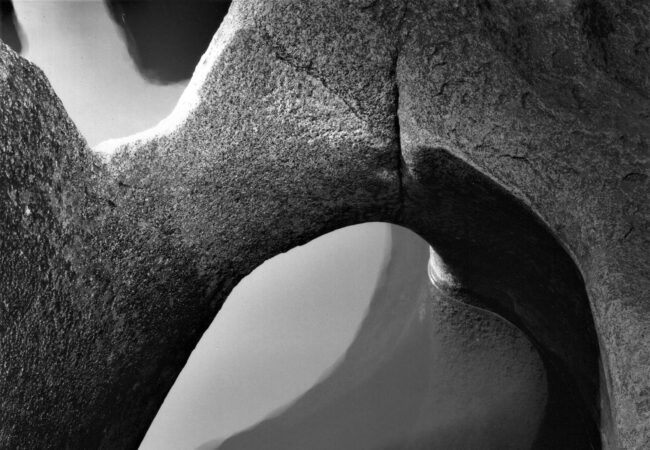
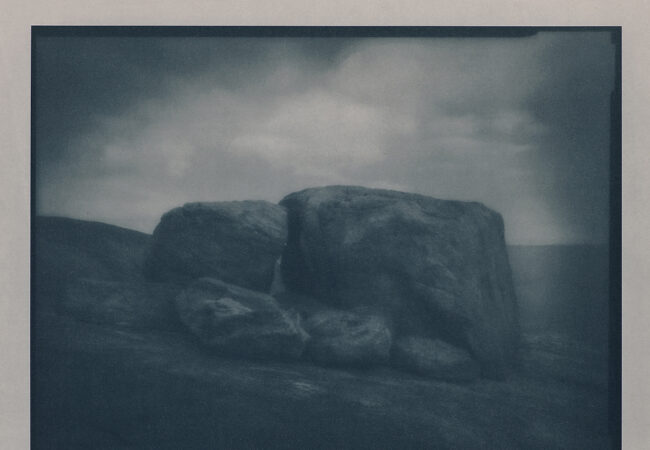
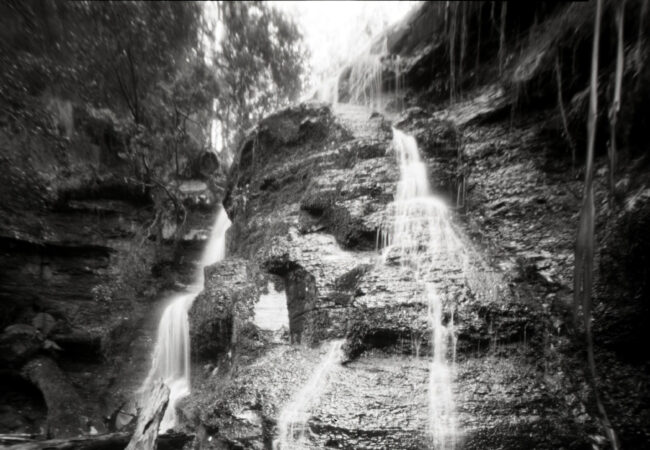

The tones and details in the image are amazing. I love the way the treeferns lead your eye to the straight trunks of the mountain ash.
Good Work Peter!
Thankyou Wayne for your comments – Nature did most the work though – I just captured it on film.
Cheers Peter
That must have been a very still day. I love the high tone Peter.
Thankyou Gary, The high key quality of the image was largely due to the mist/fog. I chose a day that was very still- however if you look closely you will see movement in a couple of the treefern fronds and some of the leaves on the blackwood wattle in front of a mountain ash on the RHS of the image. There was still the occasional puff of wind. By the way I also like photographically speaking derelict urban spaces particularly when they contain old buildings.
Cheers Peter